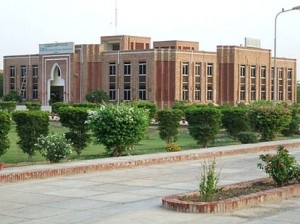Sights and Sounds of Pakistan: Sukkur Part-2
Tuesday, April 24th, 2012 9:07:48 by Naveed A Bari
Sights and Sounds of Pakistan: Sukkur Part-2
The ruins of this ancient town still exist, 8 km east of Rohri, in Sukkur district. In 711 AD, Muhammad Bin Qasim led a Muslim army and invaded Sindh, whole os Sindh (including Sukkur) and lower Punjab became part of Umayyad Caliphate. Later Mughals and
many semi-autonomous tribes ruled over Sukkur.
The city was ceded to Mirs of Khairpur between 1809 and 1824. In 1833, Shah Shuja (a warlord of Kandahar, Afghanistan) defeated the Talpurs near Sukkur and later made a solemn treaty with the Talpur ruler, by which he relinquished all claims on Sindh. In
1843, the British general, Charles James Napier, defeated the Talpurs at the battle of Miani and Dubbo near Hyderabad and ruled Sind, including Sukkur until independence of Pakistan.
In 1923, world’s biggest irrigation of that times was laid by the British with the construction of the famous Sukkur barrage (formally called Lloyd Bridge), on the Indus river. The work for the bridge was started in 1923 and completed in January 1932. The
5,000 feet long barrage is made of yellow stone and steel and can water nearly 10 million acres (40,000 km²) of farmland through its large seven canals. Some of the canals are larger than the Suez Canal.
Sukkur as it is now is the third largest city of Sindh. The name read as Suk-khar is a local variant of Arabic word "Saqar" which means intense. In the 10th century AD when Arabs invaded Sukkur), they found extreme (hot and cold) climate, and called it "Saqar".
Sukkur is also known as "Darya Dino" in local Sindhi language, meaning the the gift of river, as without the Indus this would be like Egypt deprived of Nile.
Sukkur district shares northern border with Shikarpur and (recently constituted) Kashmore districts. Ghokti is located on the north-eastern side while Khairpur on the south. Sukkur also shares its border with India (Jaisalmir, Rajasthan). Sukkur is also
connected by road air with all major cities of Pakistan.
At the time of Pakistan’s independence (1947), Sukkur district was comprised approximately 200,000 habitants, mostly engaged in agricultural pursuits and fishing industry.
Over time, Sukkur has seen a moderate rise in population (2 to 2.5% per annum) as compare to Pakistan’s, except in late 60s and early 70s when population growth rate reached 4.43% (1972 census) due to internal migration and establishment of some large bridges
on river Indus.
To be continued…
Tags: Chilas, Kaghan, Mirnshah, Naran, Pakistan Children of the TalibanShort URL: https://www.newspakistan.pk/?p=20027

















